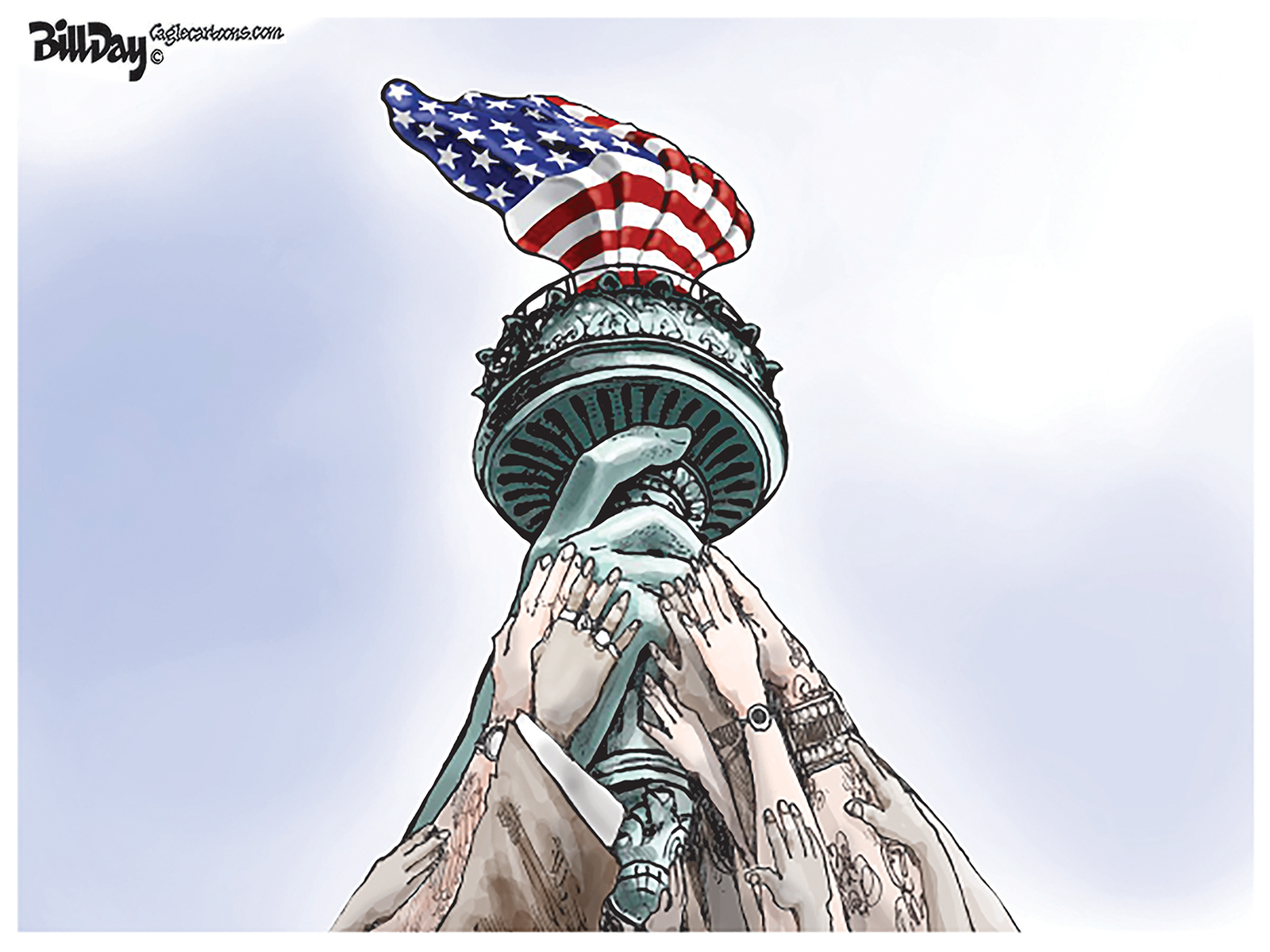Memphis has always been a tale of two cities – black and white, wealth and need, downtown and Boxtown, golf scores and body counts.
That last pairing comes from two disparate, and ultimately disturbing, reports this week.
The first appeared in an online post by a PGA Tour writer who described Memphis as a magical place and one of only a few cities that can boast of such a defined identity.
The Plague
The second appeared in a 12-page spread in the July/August Atlantic magazine – called American Murder Mystery – that asks the damning question: “Why has Elvis’s hometown turned into America’s new South Bronx?” and then proceeds to use our city as the star of a report into why crime is rising in so many American cities.
Unfortunately, in the report, Memphis comes off like a city that is out of control – “as large as New York City, but with one-seventeenth as many police officers, and a much lower cop-to-citizen ratio.”
The magazine said that the story investigates “why crime has been plaguing so many mid-sized cities…a disturbing trend – one very few politicians will want to talk about.” After this article, it’s should at least be hard for our politicians to remain mute, even a city mayor who professed during last year’s campaign that a mayor can’t do anything to reduce crime.
The Diaspora
Building on the fact that Memphis is America’s most violent city, the article suggests that the diaspora of the Memphis poor to all parts of the city created a “bleak new landscape” for the city. The dispersal was fueled by the razing of public housing and the spread of Section 8 housing vouchers for former residents.
According to the writer Hanna Rosin, the seedbeds of crime were no longer located in a few places, and as a result, it spread like a virus all across Memphis, creating a serious spike in violence and lawlessness that grips the city.
Central to the article are University of Memphis researchers and married couple Richard Janikowski and Phyllis Betts, whose respective work in creating more data-driven crime prevention programs and in analyzing housing data pointed toward the cause for the widespread crime problem.
Voila
The voila moment occurred, according to the article, when Dr. Janikowski overlaid his map of Memphis crimes with Dr. Betts’ map of Section 8 rentals. Both progressive thinkers and with finely honed social consciousness, they were “deflated” to see how perfectly the maps matched.
Co-conspirator to the exporting of crime was Memphis’ impressive success with Hope VI grants. While ballyhooed by the news media, the federal grant funds only did more to feed the proliferation of crime, the article said. Unfortunately for the poor, the motivation for the Hope VI projects was more to attract young professionals to the new, attractive, gentrified places than to create a better environment for poor families.
In the end, only 5 per cent of former public housing residents moved back into new homes on the sites of their former public housing projects, locked out by stricter criteria for residents of the new developments. By 2005, the number of people displaced from public housing totaled more than 20,000, and as they moved from the inner city outward, many neighborhoods reached their crime tipping points, the author said, adding that the key determinant seemed to be whether public housing residents moved out on their own or where forced out.
The Cold Hard Facts
Of course, the warehousing of the poor clearly wasn’t working, and even more clearly, it wasn’t even compassionate or defensible, but the lack of coaching and support services as the poor was pushed out into the broader city only exacerbated the malignancy of their problems.
Hope for Memphis, as identified by Dr. Janikowski, will come in the form of information and technology, as reflected in better policing that is better connected to new residential patterns.
We’ve written often about the need for all of us in Memphis to face the cold hard facts and to abandon the search for simplistic answers to complicated problems. This Atlantic article certainly is cold water in our collective faces.
Improved Reality Leads To Improved Image
We’ve also written that while we need to improve our self-image, we first need to improve our reality. No amount of positive marketing can overcome the Atlantic coverage of the underbelly of our city, not because it exposes our worst aspects to a national audience, but because it only reminds us of what most of us already know.
Fortunately, the Memphis Police Department and Dr. Janikowski are working more as partners, producing breakthroughs like the real time crime center. Obviously, more innovations are needed, and at least in the wake of the opening of the new real time crime center, our mayor at least acknowledged his office’s role in fighting crime.
There’s always power in seeing ourselves as others do, and in the end, perhaps that is the greatest impact of the Atlantic article. It’s a wake-up call for bolder strategies and more entrepreneurial public policies.
The Mantra
After all, to repeat our mantra, our solutions must create more than incremental progress, because incremental progress keeps us in our same relative position among the 50 largest U.S. cities – in the bottom rungs in most measurements that matter. The greatest challenge to Memphis is not in developing good programs, but in developing transformative ones that leap frog Memphis over competitive rivals in a world economy defined by its relentless competitiveness.
A crisis is a terrible thing to waste, and the Atlantic magazine article should be required reading for every city official – appointed and elected – because it gives valuable insight into a problem that plagues Memphis and undermines its opportunities to compete in the knowledge-based economy.
** The Atlantic article is not posted yet on the magazine’s website and when it is, it will also include “video clips on crime and poverty in Memphis.”



